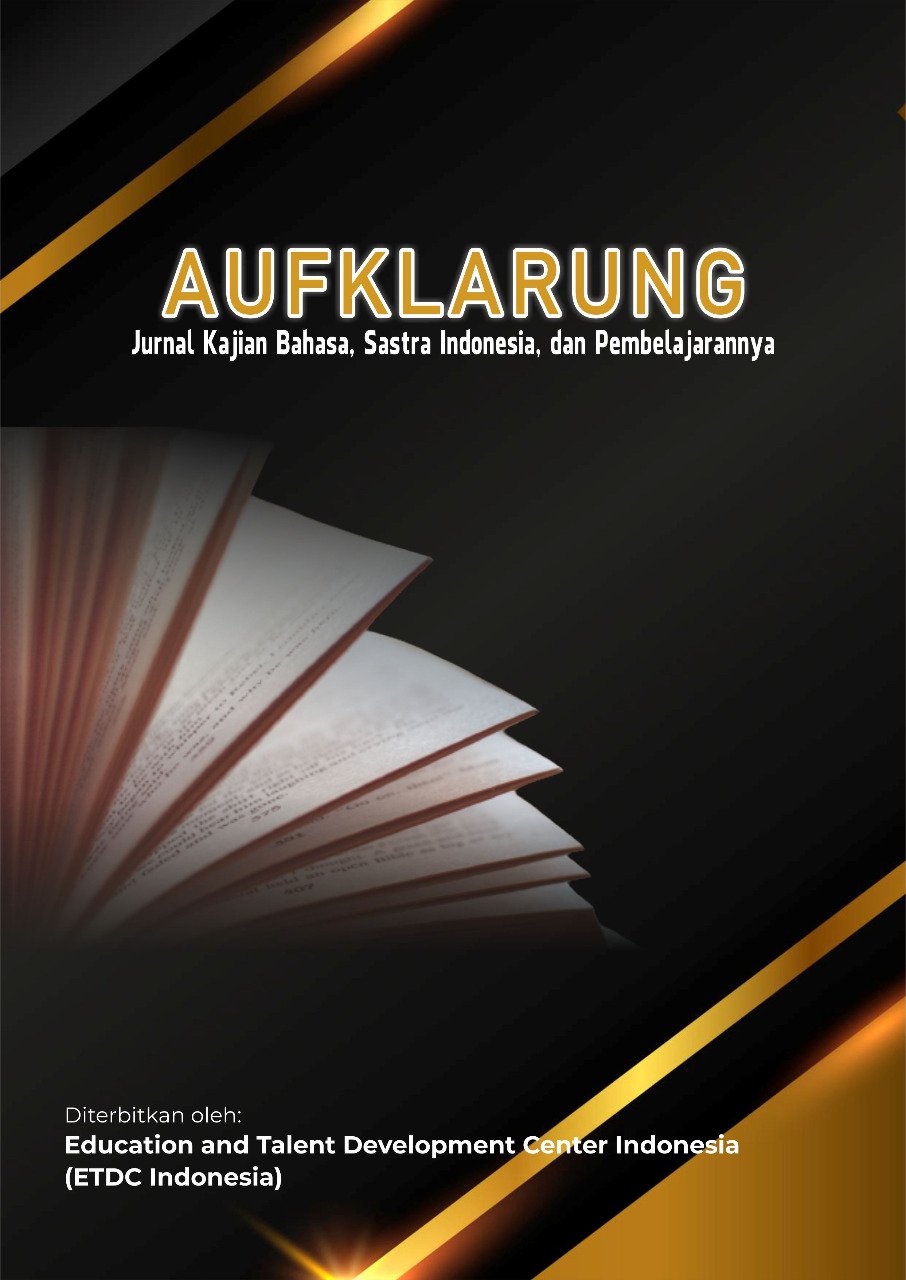KAJIAN MODEL BLENDED LEARNING DALAM JURNAL TERPILIH: IMPLEMENTASINYA DALAM PEMBELAJARAN
Keywords:
blended learning, content analysis, journalAbstract
Artikel ini berupa tulisan dari beberapa review jurnal yang penulis telah lakukan. Tulisan ini berfokus pada model pembelajaran campuran (blended learning) yang telah dipublikasikan di jurnal online dari Database Informasi Sumber Daya Pendidikan Pusat (ERIC) dan Pangkalan Data Penelitian Ilmiah dan Medis (Science.direct). Sebanyak 12 artikel yang dipilih sesuai dengan fokus tulisan. Dalam konteks ini, fokus utamanya adalah membuat analisis isi berdasarkan beberapa aspek penting dalam hal rancangan penelitian, instrumen, dan metode penelitian. hasil analisis yang telah dibuat terhadap artikel-artikel yang diterbitkan dalam pangkalan data Education Resources Information Center (ERIC) dan science.direct menunjukkan kajian tentang blended learning semakin berkembang dari masa ke masa. Walau bagaimanapun dapat dinyatakan bahwa mayoritas artikel yang dihasilkan adalah dengan menggunakan kajian berbentuk kualitatif untuk mendapatkan data kajian. Konsep blended learning merupakan salah satu inovasi dalam pembelajaran. Inovasi ini menyangkut pencampuran model belajar konvensional dan model belajar online dengan jaringan internet. Pembelajaran blended learning akan mengharuskan peserta didik memainkan peranan yang lebih aktif dalam pembelajarannya, karena blended learning ini adalah model pembelajaran campuran maka teori yang digunakan pun terdiri atas berbagai teori belajar dari beberapa ahli dengan menyesuaikan situasi dan kondisi belajar peserta didik. Blended Learning ini tidak berarti menggantikan model belajar konvensional di dalam kelas, tetapi memperkuat model belajar tersebut melalui pengembangan teknologi pendidikan.
References
Bergmann, J., & Sams, A. 2012. Flip Your Classroom: Reach Every Student in Every Class Every Day. Washington, DC: International Society for Technology in Education.
Blake, R. 2013. Brave New Digital Classroom: Technology and Foreign Language Learning (2nd ed.). Washington, D.C. Georgetown University Press.
Blake, R. 2016. Technology and the four skills. Language Learning & Technology, 20(2), 129-142
Bonk, C. J. dan Graham,C. 2006. The Handbook of Blended Learning. Global Perspectives, Local Design. San Fransisco : Pfeiffer
Brame, C. 2013. Flipping the classroom. Nashville, TN: Vanderbilt University, Center for Teaching. Retrieved 2015 from https://cft.vanderbilt.edu/guides-sub-pages/flipping-the-classroom/
Bransford, J. D., Brown, A. L., & Cocking, R. R. 2000. How People Learn: Brain, Mind, Experience, and School. Washington, DC: National Academy Press
Byram, M. 1997. Teaching and Assessing Intercultural Communicative Competence. UK:
Multilingual Matters Ltd.
Chaeruman, U, A. 2007. Suatu Model Pendidikan dengan Sistem Belajar Mandiri. Jurnal Teknodik No. 21/XI/Teknodik/Agustus
Cruz-Johnson, C. 2012. Success and Persistence of Learners in a Blended Developmental Reading Course at an Urban Community College (Doctoral Dissertation). Capella University, Minneapolis, Minnesota.
Dabbagh, Nada. 2005. Online Learning: Concepts, Strategies, and Application. New Jersey. Pearson Education Inc.
Dempster, F.N. 1988. The Spacing Effect: A Case Study in the Failure to Apply The
Results of Psychological Research. American Psychologist, 43(8), pp. 627-634.
Elaine Allen, Jeff Seaman, and Richard Garrett. 2007. Blending In The Extent and Promise of Blended Education in the United States.Sloan-C™.
Elliott, M. 2002. Blended Learning: The Magic Is In The Mix. In A. Rossett (Ed.). The ASTDe-learning handbook (pp. 58-63). New York: McGraw-Hill.
Garman, D. E. 2012. Student Success in Face-to-Face and Online Sections of Biology Courses at a Community College in East Tennessee. Electronic Theses and Dissertations. Paper 1408. https://dc.etsu.edu/etd/1408/
Graham,C.,Allen,S.,&Ure,D.2005.Benefits And Challenges of Blended Learning Environments. In M. Khosrow Pour (Ed.). Encyclopedia of information science and technology I-V. Hershey, PA: Idea Group Inc.
Helmling, B. (Ed.) 2002. L'apprentissage des langues en tandem, Didier: Paris.
Klopfer, E. Squire, K., & Jenkins, H. 2002. Environmental detectives: PDAs as a window into a virtual simulated world. In: Proceedings of IEEE International Workshop on Wireless and Mobile Technologies in Education (pp. 95-98). Vaxjo, Sweden: IEEE Computer Society
Lai, M., Lam, K. M., & Lim, C. P. 2016. Design principles for the blend in blended learning: a collective case study. Teaching in Higher Education, 1-14
Lloyd-Smith, L. 2010. Exploring the advantages of blended instruction at community colleges and technical schools. MERLOT Journal of Online Learning and Teaching, 6(2), 508-515.
Ma’arop, A. H., & Embi, M. A. 2016. Implementation of blended learning in higher learning institutions: A review of literature. International Education Studies, 9(3), 41-52.
Margaret Driscoll, Saul Carliner. 2005. Advanced Web-Based Training Strategies : Unlocking Instructionality Sound Online Learning. San Fransisco : Preifer
McGee, P., & Reis, A. 2012. Blended course design: A synthesis of best practices. Journal of Asynchronous Learning Networks, 16(4), 7-22.
Moeller, A. J., & Nugent, K. 2014. Building intercultural competence in the language classroom. In S. Dhonau (Ed.), Unlock the gateway to communication, selected papers from the 2014 Central States conference on the teaching of foreign languages (pp. 1-18). Richmond, VA: Robert M. Terry. Retrieved from http://www.csctf.org/ documents/2014Report/CSCTFLReport2014.pdf
Pachler, N., Cook, J., & Bachmair, B. 2010. Appropriation of mobile cultural resources for learning. International Journal of Mobile and Blended Learning, 2(1), 1-21.
Plomp,Tjeer and Donald P. Ely. 1996. International Encyclopedia of Educational Technology. Cambridge: Elsevier Science Ltd
Rusyan, Tabrani. 1990. Profesionalisme Tenaga Kependidikan. Bandung: Yayasan Karya.
Shand, K., Glassett Farrelly, S., & Costa, V. 2016. Principles of course redesign: A model for blended learning. In Proceedings of Society for Information Technology & Teacher Education International Conference 2016 (pp. 378-389). Chesapeake, VA: Association for the Advancement of Computing in Education (AACE). Retrieved from
https://www.learntechlib.org/p/172311/
Stanley, G. 2013. Language Learning with Technology: Ideas for Integrating Technology in the Classroom. Cambridge: Cambridge University Press
Sudirman N,Tabrani Rusyan, dkk. 1990. Ilmu Pendidikan. Bandung: Remaja Rosdakarya.
Thornton, P., & Houser, C. 2005. Using mobile phones in English education in Japan. Journal of Computer Assisted Learning, 21, 217-228
Vesselinov, R., & Grego, J. 2012. Duolingo effectiveness study: Final report. New York: City University of New York. Retrieved May 12, 2017 from http://static.duolingo.com/s3/DuolingoReport_Final.pdf













